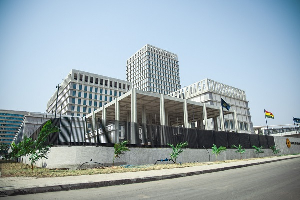By Dr A. Ofori Quaah
Flitwick, England
Dear Mr Ankrah
Re: Falling rocks pose danger to Aburi road users
I have just read the article with the above headline on Ghanaweb with some interest. I am not sure if you were part of the group that did the fieldwork in the Eastern Region after the series of earthquakes in early 1998, but clearly this was something that was waiting to happen. The signs of continuous movement along the Awapim Fault zone were very clear at the Peduase Lodge especially, as shown by several ‘generations’ of cracks on the floor of one of the state rooms that are repaired only to re-appear soon afterwards. I believe I mentioned in my report on the earthquakes that unfortunately, that edifice may have to be abandoned some day because of the sheer volume and size of the cracks and the fact that the movement that causes the cracks in the buildings in the area is a geological phenomenon that cannot be eradicated in any way.
You may also remember the trips to the landslides/rock falls at Krobo Odumase, MaCarthy Hill area, the village near Nkawkaw on the Kwahu Scarp, the village on the Mampong Scarp near Ashanti Mampong in the Ashanti Region? There was also the little village near Ho in the Volta Region, where there had been a massive rock fall which nearly flattened the whole village. Apart from the Mampong and Kwahu rock falls, all the others were related to the Akwapim Fault zone and all of them, including the MaCarthy Hill landslides, happened because the thin veneer of vegetation that kept the trees and rocks intact had been removed for crop cultivation and or residential housing construction, in the case of the MaCarthy Hill area.
Lamentably, the NADMO admonition for those hill slopes to be left alone was never heeded. I cannot for the life of me understand why people would actually buy land on those precarious hills to the west of the road from Ayi Mensah towards Aburi, for the purpose of putting up residential houses, when the rocks that should form the foundations of buildings are so badly broken up one can actually move them with the hand, without so much as a pick axe.
Suggestion
The article in question did not state if this particular rock fall was caused by heavy rains, but whatever it is, removing a few hanging rocks will not solve the problem. In fact, it may end up triggering further falls. Remember the extensive shearing of the rocks. What is needed is a slope stabilization netting system to secure the loose rocks in the immediate rock fall area, followed by secured fencing at one or two levels along the slope and another at the valley level. I believe the AESC used this “gabion and wire” netting system to secure a portion of the Nungua-Tema beach road sometime ago. Ultimately, the whole portion of that road ought to be fenced at several levels along the sliopes. The idea of fencing is that even if a large boulder manages to slip through the fence, its velocity is greatly reduced by the fencing, which prevents it from causing major damage at the valley or road level.
All areas along the slopes and hill tops that have been cleared for whatever purpose ought to be grassed immediately and trees planted at regular intervals, to bring some level of stability. Also a buffer zone of several hundred metres must be created where no farming or construction of any kind whatsoever should be permitted. As preparation for next year’s rains, you may wish to re-visit some of those earlier rock fall/landslide sites. This rock fall may be a timely reminder.
Stay blessed
Opinions of Wednesday, 9 October 2013
Columnist: Quaah, Amos Ofori


















